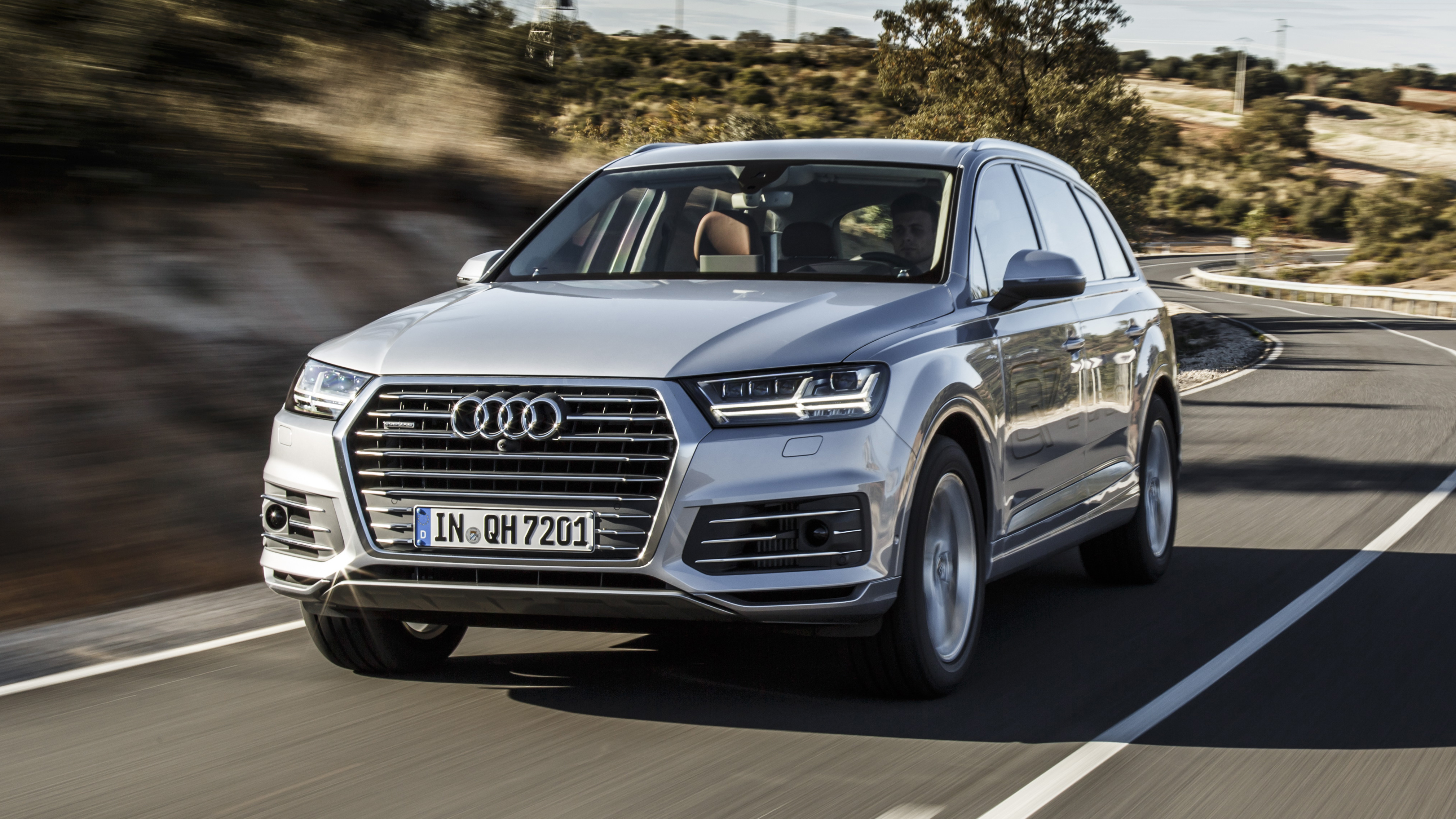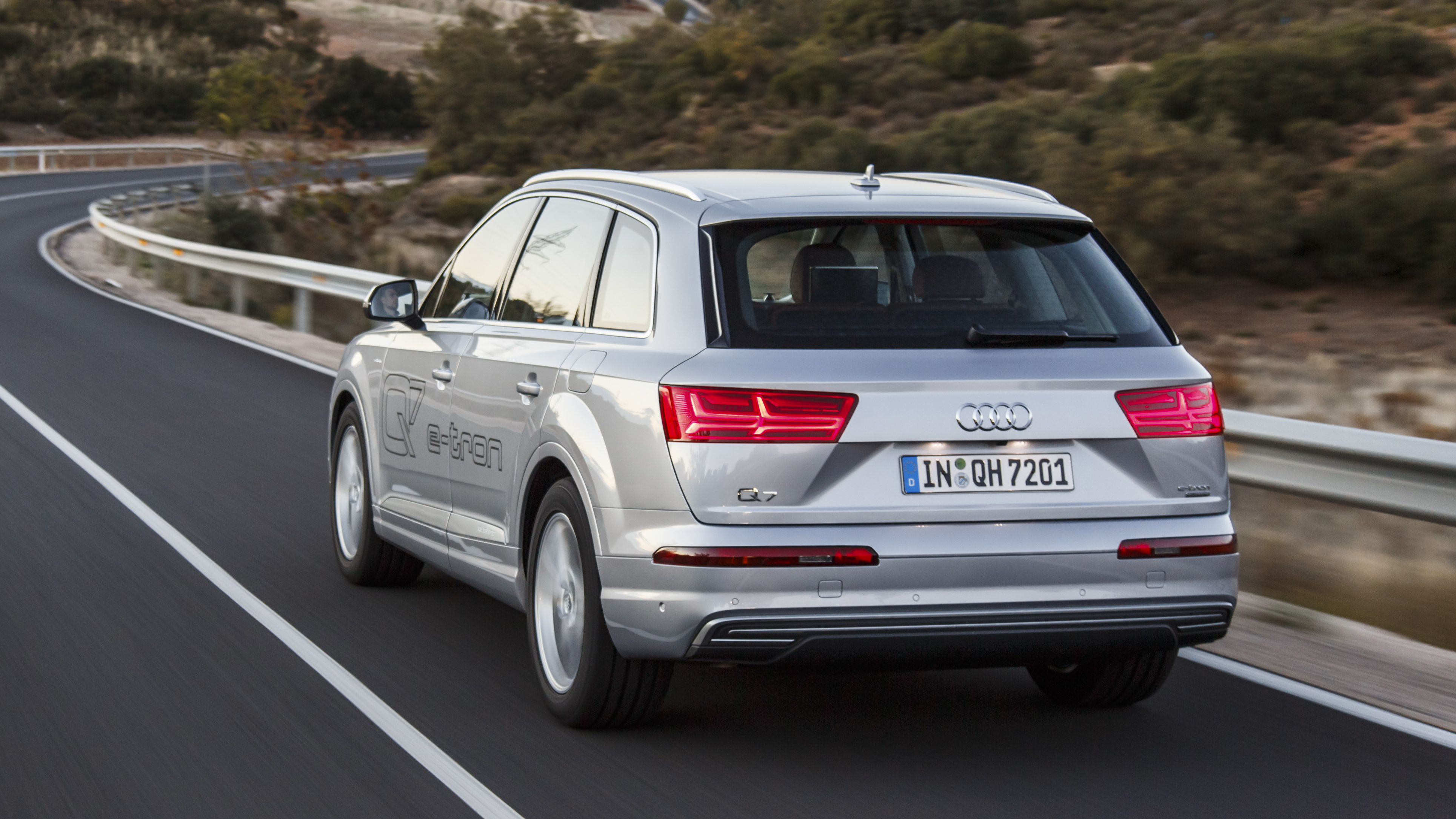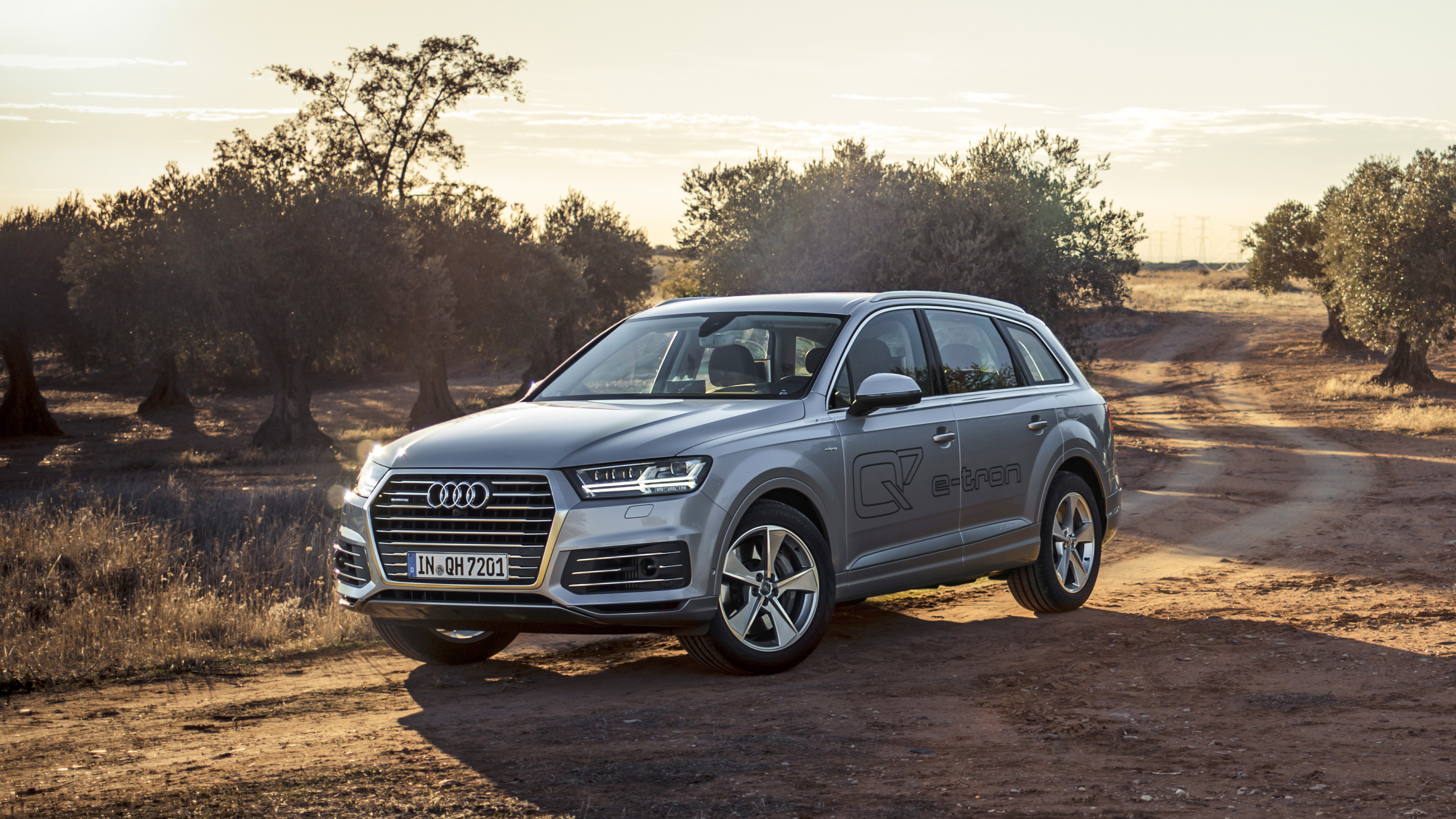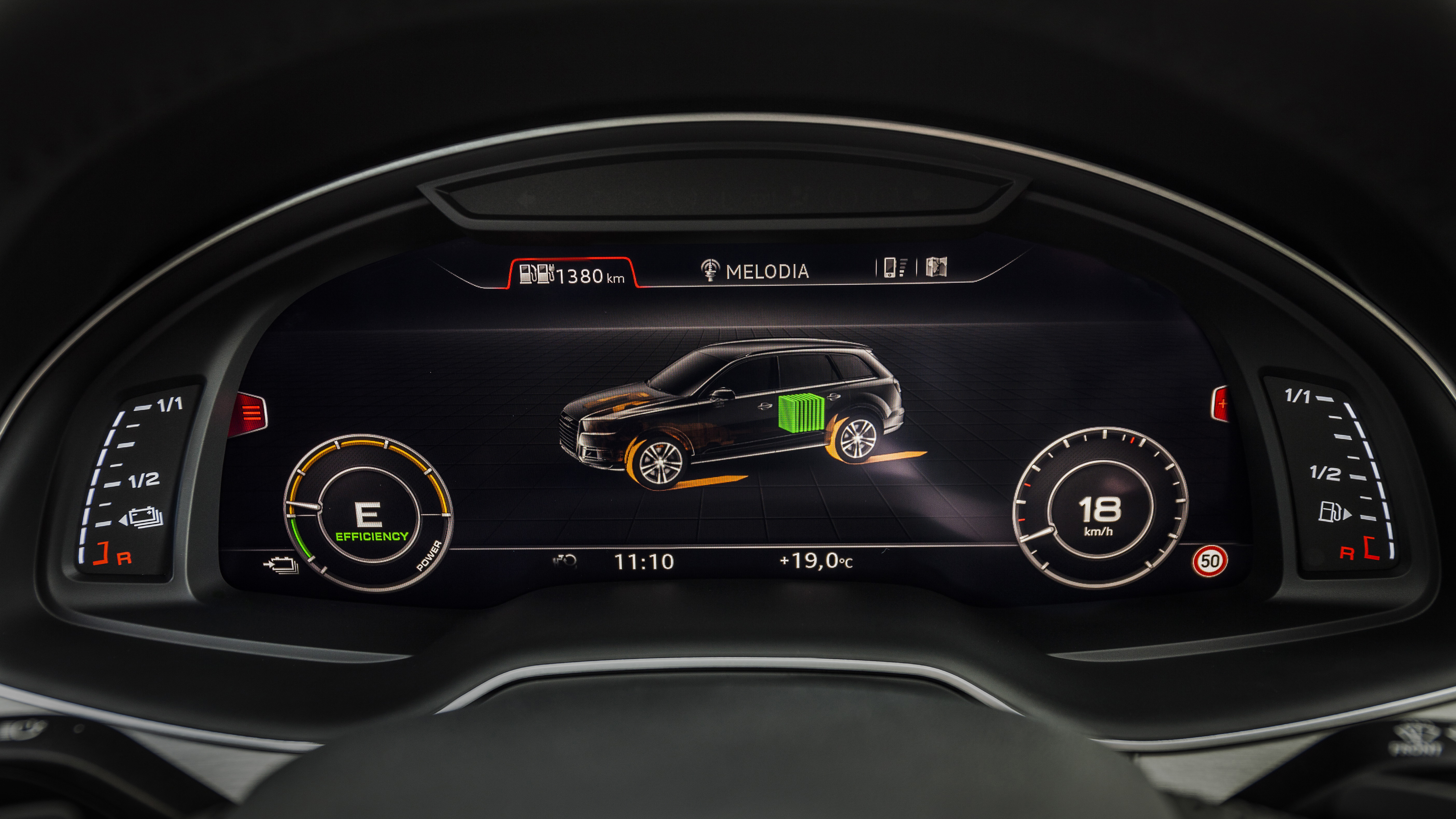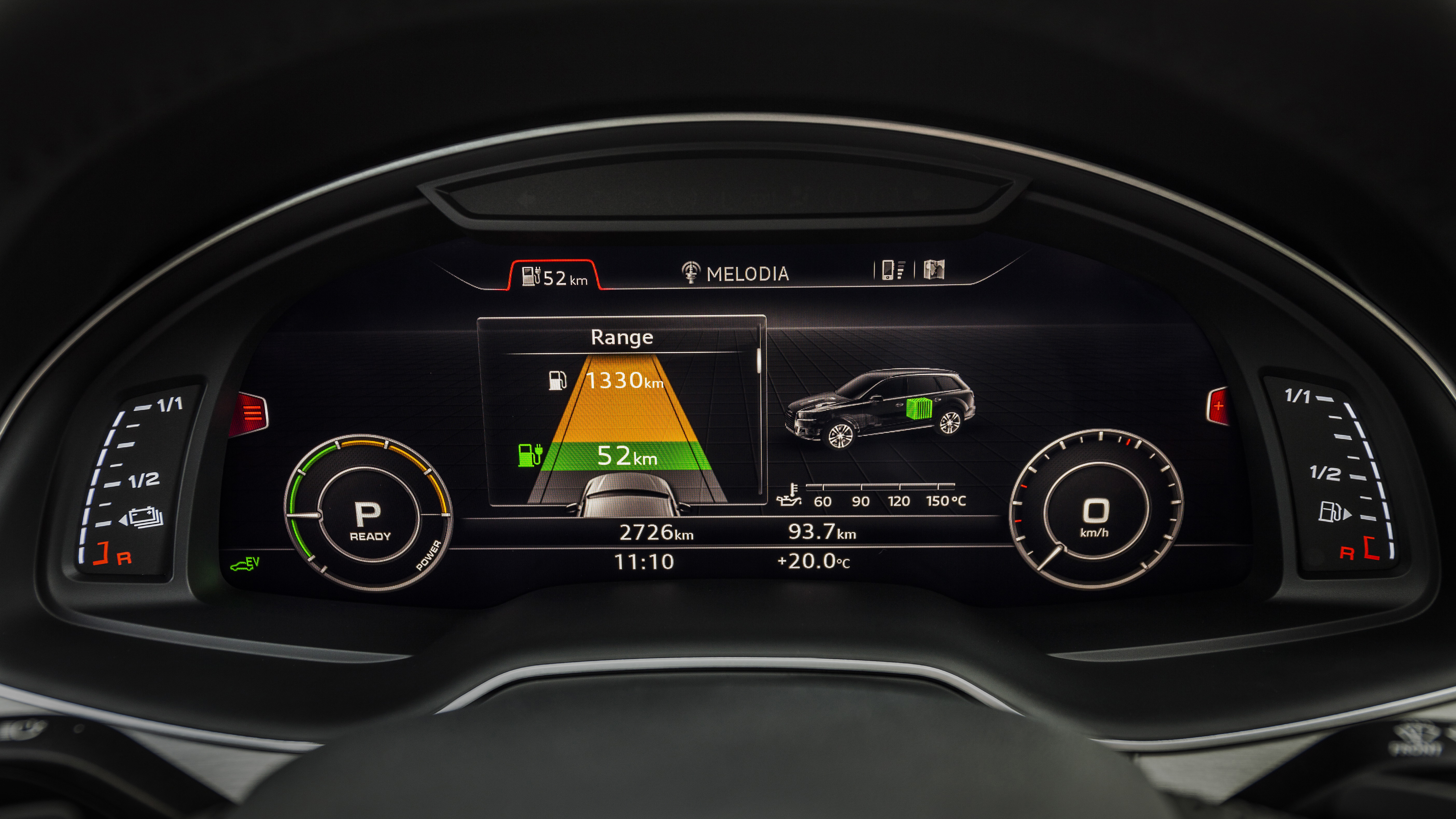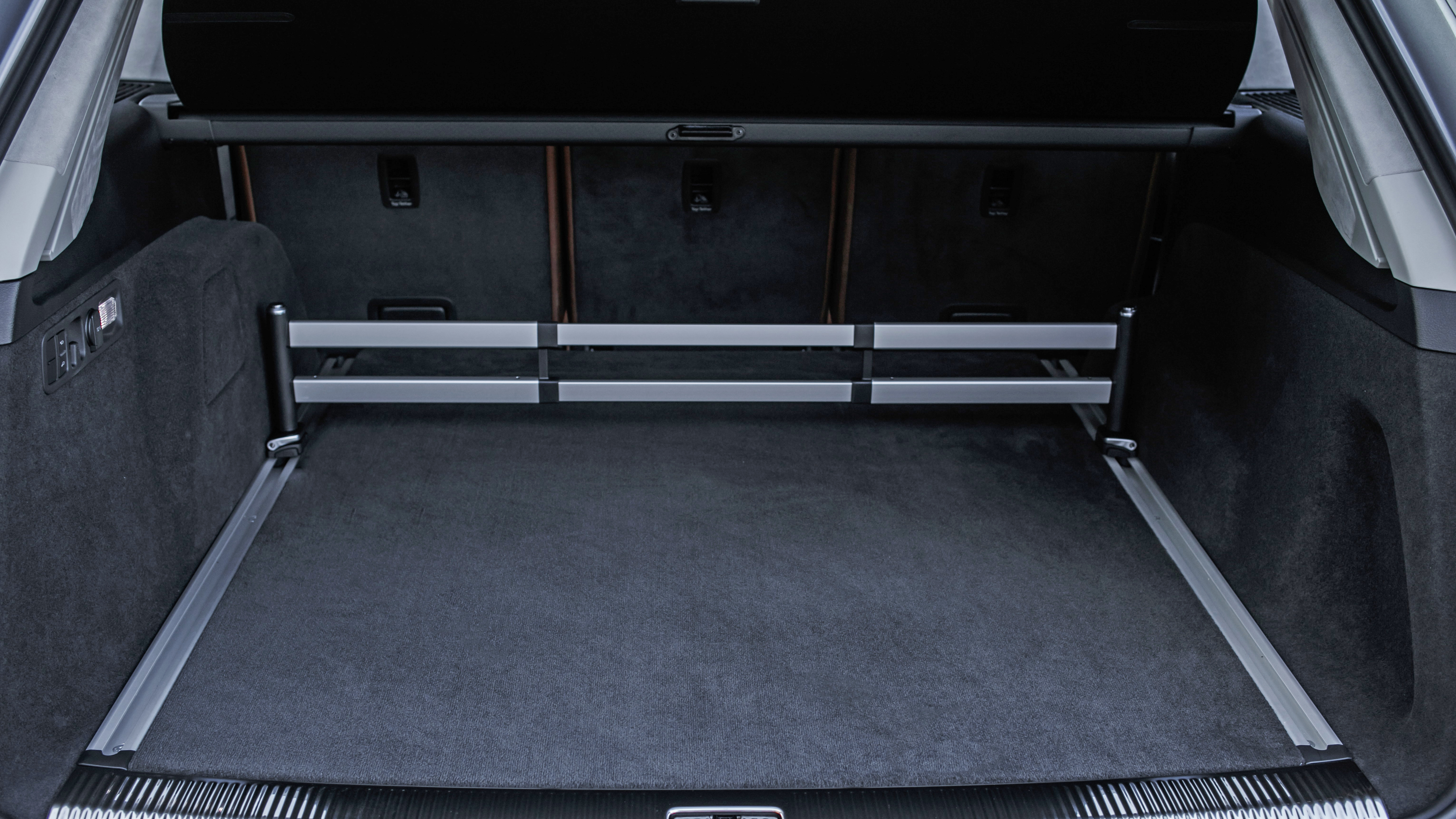
What’s this, then?
It’s the Audi Q7 e-tron. That’s a suffix you may recognise from Audi concepts aplenty, all of them demonstrating electric technology. This doesn’t quite go the whole hog, being a plug-in hybrid. But the numbers are arresting, its claimed 166mpg in particular.
The plan – presuming VW group R&D coffers don’t take too big a hit post-emissions scandal – is that each model Audi makes will be offered with some form of electrification. And this Q7 is the firm’s second stab at a hybrid, following the diddier A3 e-tron.
Surely trying to make a big SUV clean is pointless?
That’s one argument, but given how much weight batteries add – this Q7 is more than 400kg heavier than standard, at 2445kg – you could argue that adding one to an already hefty car yields a better improvement in green numbers. The weight increase is less significant, see.
Plus people still have an unquenchable thirst for SUVs…
Okay then. Tell me some numbers.
The Q7 hooks a 3.0-litre V6 diesel engine up to an electric motor, their total output a combined 368bhp and 516lb ft. Working together through an eight-speed automatic gearbox and Quattro four-wheel-drive, they yield a none-too-shabby 6.0-second 0-62mph time and a 139mph top speed.
Those are the numbers to whet your appetite, though, the ones that give worthy technology an attractive sheen. The ones that should matter most in a hybrid like this are range (35 miles on electric alone, 876 miles altogether), battery charging time (over eight hours on a standard home socket, though it can be kept topped up on the move) and CO2 (46g/km is a smidge less than a hybrid XC90 and a lot less than a Cayenne S Hybrid), not forgetting that 166mpg mentioned earlier.
Some of them won’t be readily achievable in the real world, but then very few of the numbers quoted from the unrealistic, independently tested cycle are. TG managed 77mpg, though, impressive given we were driving with no sop towards economy. Just as most people do when they want to use their car to get places on time, then.
Top Gear
Newsletter
Thank you for subscribing to our newsletter. Look out for your regular round-up of news, reviews and offers in your inbox.
Get all the latest news, reviews and exclusives, direct to your inbox.
Does it encourage quick driving?
This is not an SUV that’s light on its toes, but then neither is the hybrid version of the otherwise athletic Porsche Cayenne. The weight is up nearly 25 per cent, and it’s under the boot rather than slap bang below the car's centre, so it was never going to behave like a chubby hot hatch.
What it does do, though, is cosset. The regular Q7 is a paragon of peace and quiet, the adept acoustics of its interior cocooning occupants wonderfully. With its optional air suspension fitted and periods of no engine noise whatsoever, this e-tron takes things a step further. Gliding silently through a village in something so large is genuinely good fun, though you do need to be aware pedestrians may not hear you coming…
Prod the throttle past a certain point and the diesel engine will kick in, but even then its audible input is small. Do so and acceleration is brisk, but this is a car best when it’s not hustled. Grip levels may be very high but it feels its size, and is happiest when being driven smoothly and calmly. And this is when the drivetrain reveals its trump cards, too.
Are there lots of driving modes?
You can cycle through the usual Audi Drive Select settings – Comfort, Sport et al – and you can also take control of how the hybrid system behaves, telling it to default to electric-only mode, or keep the battery full of charge so you can float inconspicuously through town as you approach home.
Leave the buttons alone, though, and the car will make its own mind up on how to use its two power sources most efficiently, calling upon a satnav system that assesses the roundabouts, junctions and hills that lie between you and your destination. Given this isn’t a car you're inclined to grab by the scruff of its neck, that’s when the e-tron will work best.
Sounds clever. Any other goodies to tell me about?
If you want clever, then a thermal pump feeds waste heat emitted by the electric components into the air conditioning system, making the car toastier when you first get in on a cold morning, and reducing the air con’s effect on fuel economy.
Audi’s Virtual Cockpit is fitted, and as you can see in the pictures above, it does a sterling job of making the vital (if dull) statistics looks swish and lovely. Audi is far from first to the hybrid game, but it can be rightly trusted with injecting a bit of pizzazz into plugging your car in.
Finally, hill descent control and an off-piste setting for the stability control ensure that despite the tech beneath, Q7 owners can still go off-road. They still won’t.
Any downsides?
A few, yes. Actual boot space may not be affected, but the battery beneath its floor means you can no longer have an extra row of seats or, indeed, a spare wheel in your Q7. Maybe that off-roading isn’t so wise after all.
The Q7 e-tron will also cost around £65,000. You’ll likely be able to lop £5,000 off that via a government grant, but that still makes the e-tron around ten grand more expensive than the diesel Q7 it sits above. You'll pay similar money for Volvo and Porsche's alternatives, however.
And there’s no doubt it’s a soothing place to be when the engine falls silent, while the Q7’s underlying platform will be shared with plenty of other Audis, meaning we’ll see this plug-in drivetrain in other, less leviathan models soon enough. It could be just the tonic to repair the chinks in the diesel car armour.
Featured

Trending this week
- Car Review
Porsche 911 GT3 (992.2)




